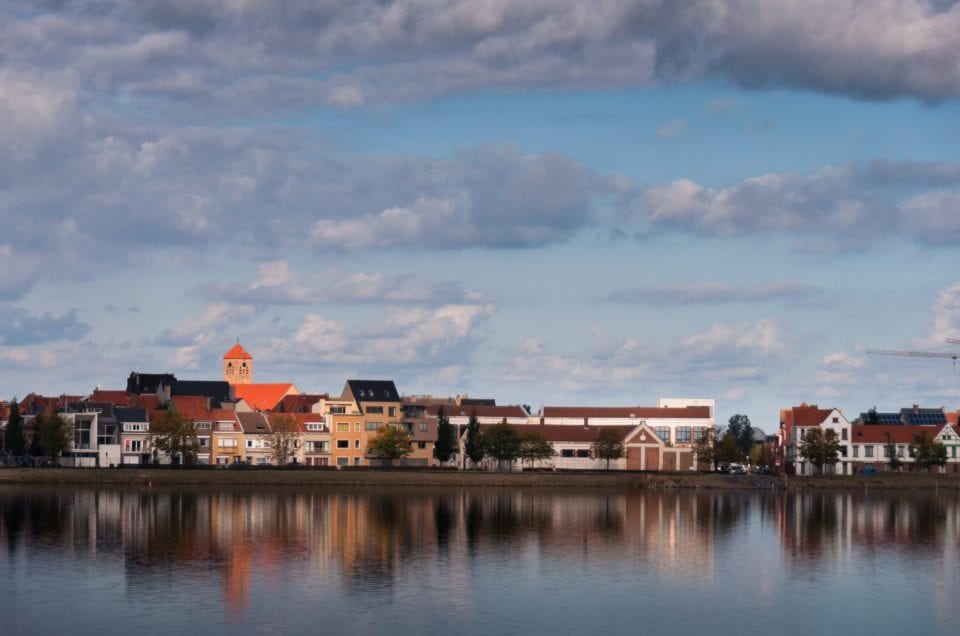Landscape photography
Explaining landscape photography is rather tricky. However, the more I think about it, the broader the definition seems.
A landscape photo can be a wide-angle image of an impressive pristine area, a lake, an ocean, or a simple image of a flower in a pond. If the site, the lake or the winter pond tells something significant about the place, its inhabitants, and the circumstances or brings a certain emotion to the viewer, it works.
Large or small, a landscape is not so much the object itself, but it is about “a place in which the subject exists or space where the feelings or emotions originate”.
The landscape can be a spectacular view or nature. It can simply be the game of light and shadow, the abundance of fields and bushes in the summer, or the wind-swept dunes. These subjects can be seen from close by and afar (using a wide-angle or super-telephoto lens). In addition, landscapes can also be real, fictional, existing, manmade, or even abstract in nature.
The landscape artist can opt to reflect reality, create a certain emotion, or evoke a certain emotion he experienced when he released the shutter. The joy of seeing a landscape and the joy of making the image are twofold bonuses of landscape photography.
For all these reasons, there is no strict definition of landscape photography. Every photographer may have his definition.
Travel photography?
Landscape photography is undoubtedly different from travel photography. Travel photography is, in my opinion, often more documentary: about what people saw and/or experienced at a particular moment in a certain place. That does not preclude one from photographing beautiful landscapes while travelling.
However, travellers usually do not always have a conscious choice of when they take a picture. In many cases, they have to be satisfied with lesser results. When the circumstances at that particular moment are less favourable, many will take the picture anyway. This is mainly to record a memory and probably not for a portfolio.
Photography is a way of feeling, of touching, of loving. What you have caught on film is captured forever it remembers little things, long after you have forgotten everything” – Aaron Sidkind
There is one thing that we do find in most definitions as a common denominator. Landscape photography captures the (natural) environment on a digital sensor that can be seen from a certain point of view at a specific moment. Of course, this immediately adds the dimension of time. After all, you can only observe “at a given moment.”
Point of view and timing
Ansel Adams described the landscape as a set of geological, biological and cultural-historical elements that all together form a whole in a given area, are visible at once and are closed by the horizon. I do not need to include the horizon in a landscape photo. Based on the weather or light conditions. I will decide on the spot, case by case, whether or not to include the horizon. And secondly, I will consider the placement of that horizon somewhere in the picture. Look also at my blog on the horizon in landscape photos.
Man-made landscapes
The landscape is not limited to the natural living environment of plants and animals. Human activity and its consequences are explicitly part of (many) landscapes. Most landscapes, all over Europe and also in many other areas on our planet, are nowadays man-made or at least influenced or disturbed by human activities. Industry, housing, towers, roads, canals, bridges, power lines, windmills, and agriculture will impact the view.
Extra dimensions of a landscape
First, a landscape is, of course, a visual concept. In my opinion, however, while being in the landscape goes even further and with good reason, smell and sound can be considered part of the landscape’s sensation. Therefore, I believe that landscapes also have a sensory notion.
However, most of that is lost in a two-dimensional picture. A nice and lovely landscape does not automatically give you a nice photo. Much more effort should be put into the ‘creation’ of good landscape pictures, with the help of leading lines, colours, light, foreground interest, composition, framing, etc. I haven’t yet mentioned the art of leaving things out of the picture.
Framing the picture
Assuming the photographer knows his camera and settings, he/she has many other choices. Will he/she focus on a perfect representation of the real landscape in front of them? Will he/she stop time in a long exposure? Or will he/she even go for the more abstract and minimalist approach and maybe wander into the field of fine art photography?
There should be room for all of those approaches, and there will always be people loving or hating one of those. First, the photographer should be happy with what he or she has created. They become a real photographer when they can pass this feeling or emotion to the viewer.
I hope this does not discourage people from taking landscape photos. I also hope some of my portfolio’s pictures might inspire you.
I will probably elaborate on some of these themes in a future blog.
Let me know what you feel about my thoughts, and keep looking around!

Leave a reply